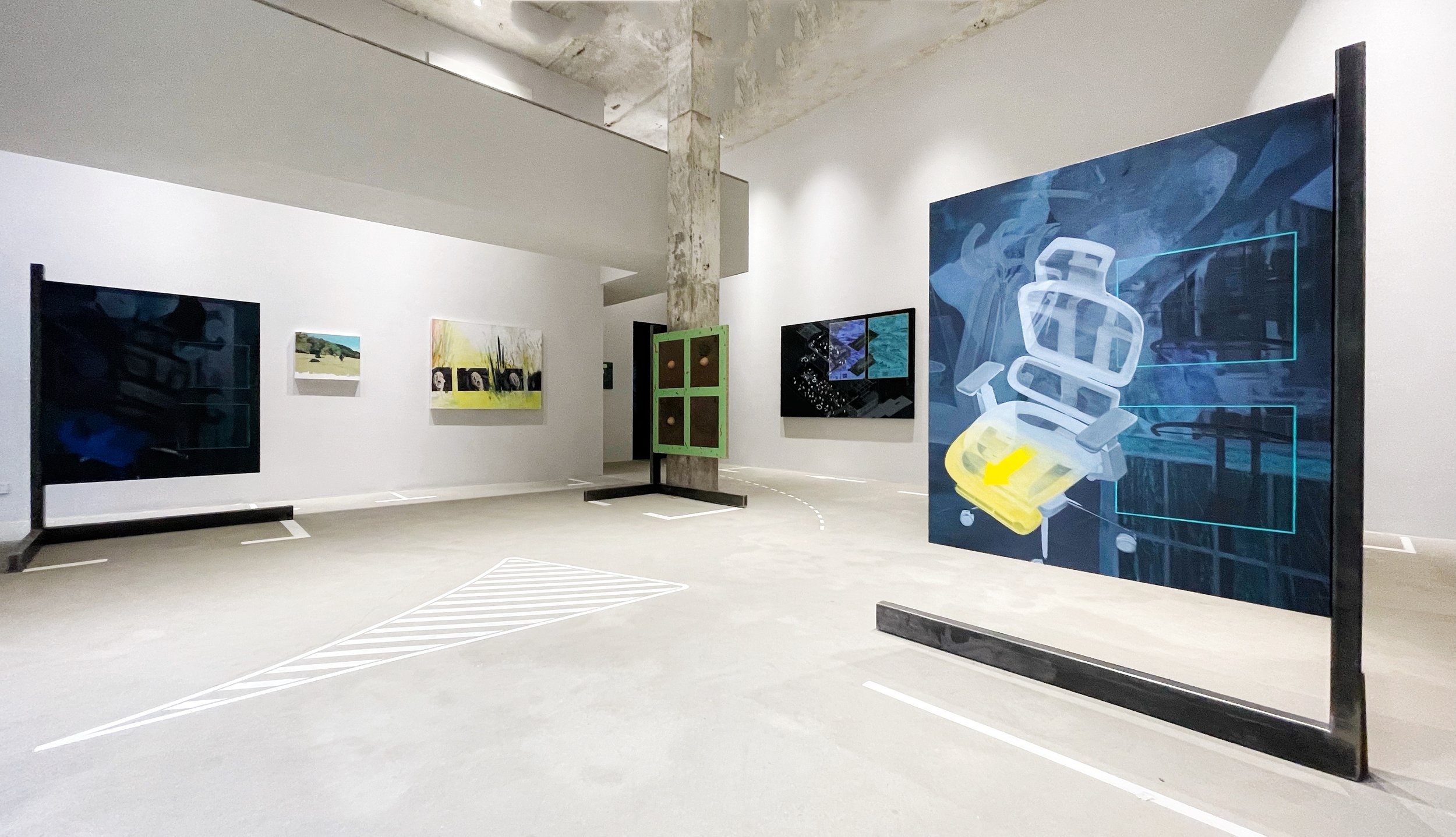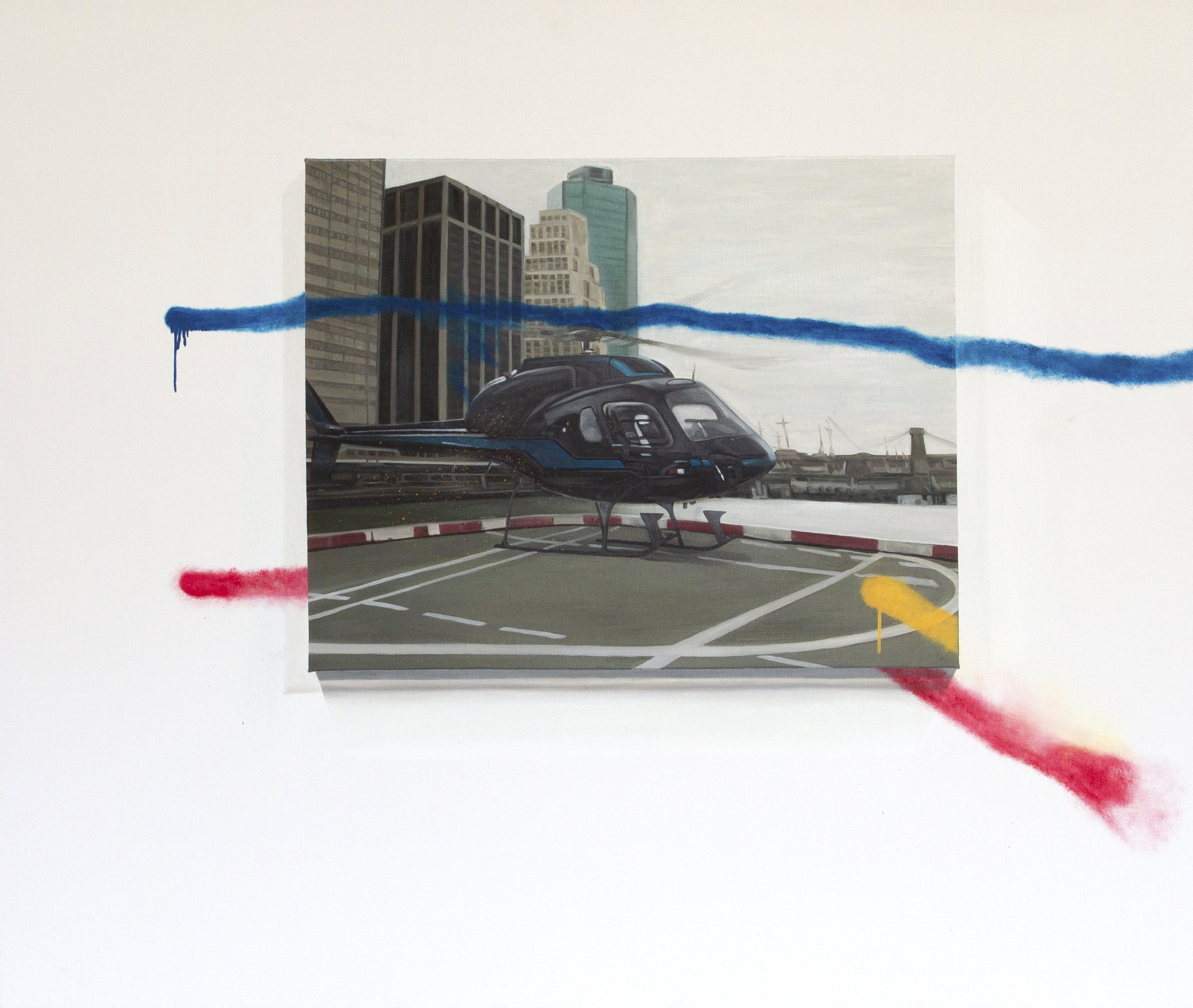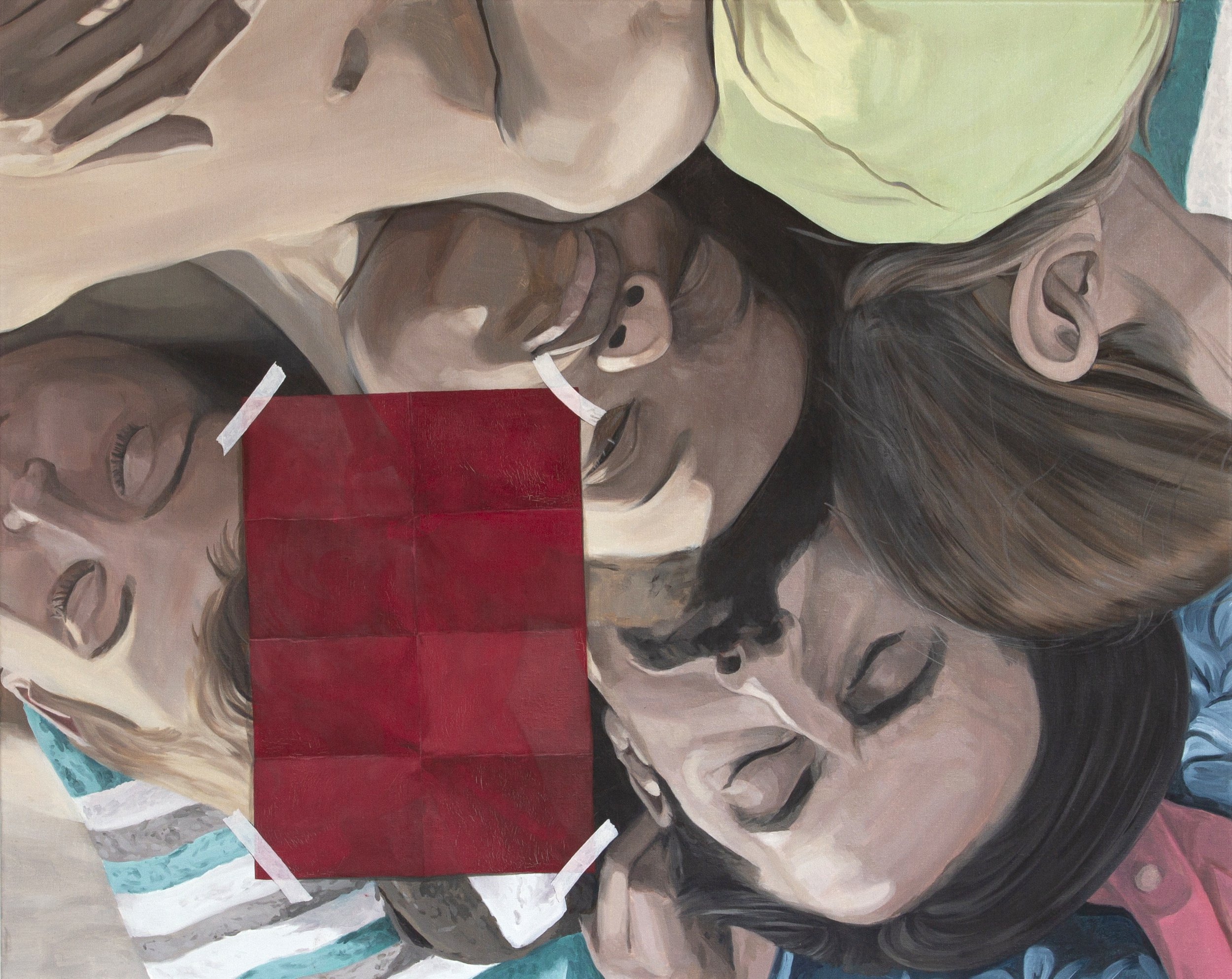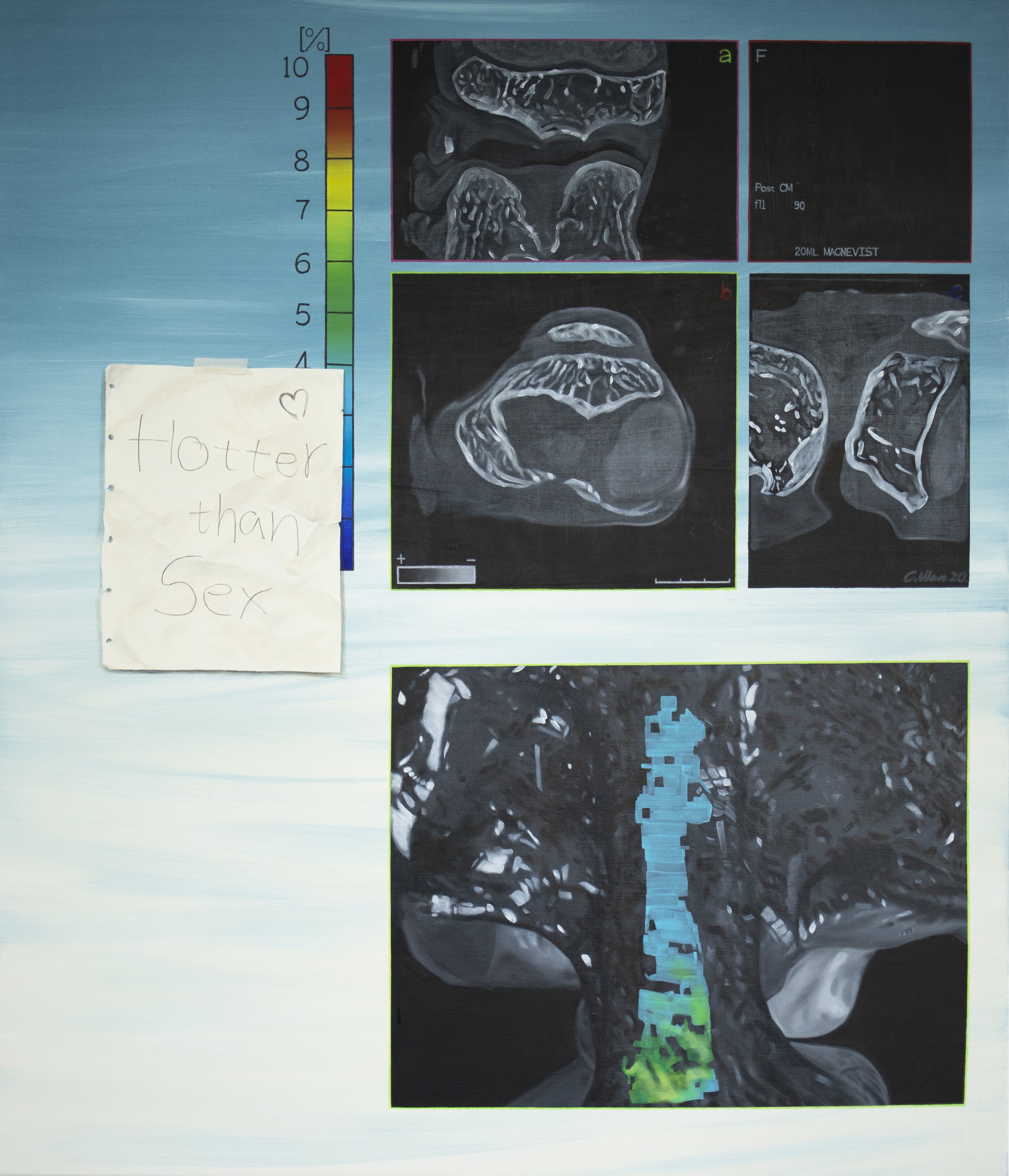Wan Chaoqian: AS YOU LIKE IT
Curator: Chao Jiaxing
10 March - 29 May, 2022
Rm 105, Bldg 6, 50 Moganshan Rd, Shanghai
BROWNIE Project is pleased to present “As You Like It”, Wan Chaoqian’s solo exhibition from March 10. The exhibition features Wan’s work created in the UK and Beijing. It is also the artist’s debut solo exhibition in China.
The tranquil landscape has always been an undercurrent in human history. With the rise of the British middle class in the 19th century, landscape art depicting vast meadows became the testification of the middle class's awareness of social stratification." The Landscape is a vision shared and savoured by a group of people who like to wander through it." The Landscape is the history where the communist revolution and the silenced massacre as seen through the lens of a documentary (Patricio Guzmán, El botón de Nácar). The Landscape is obscure witchcraft and ecstasy (Lars von Trier, Antichrist). The Landscape is also the residence of the celibate loners in the anti-utopian world where they wander freely with the risk to be shot at any time (Yorgos Lanthimos, The Lobster)… They say there is a vast dense Arden forest around the Avon River in Stratford, which Shakespeare learned its ancient legends from his elders since he was a child, including the well-known story of the European heroic outlaw Robin Hood. And it is in this forest Shakespeare's script As You Like It (1599) took place.
Deeply influenced by visual experience and image history, the 1995-born artist Wan Chaoqian engages these profound landscapes in his practice: Disturbing stills from CCTV camera for military use, children running on the beach within reach of laser sights, the artist's home on Google Maps, torn portrait of a government official and an apple being peeled, an egg being buried bit by bit, a religious statue in an aromatic garden, a real-estate advertisement, a Le Corbusier styled contemporary luxury residence… These Landscapes are disposed under a series of interfaces that the artist called "perspective barriers", like the sniper's sights, the white circle in GPS, the Trompe-l'œil, even the visual composition in Taobao advertisements. Everyday information viewed through these interfaces creates a sense of alienation while the punctum emerges relentlessly. The linguistic history of Landscape (geographic) as image reminds us that its modern presentation has long overpowered its originally recognizable interface, while our artist is forming a new landscape using these mostly recycled images from modern life. Erwin Panofsky defined the existed psychological mechanisms of the image in human history, and today, images, as a classic "tertiary retention," have encountered a compression of our time by artificial intelligence. The images, virtual or actual, involved in Wan's works are testifying the creepy disciplines of the society of surveillance coined by Michel Foucault. They also serve as embodiments of the performance society(“Leistungsgesellschaft” mentioned by Byung-Chul Han) endorsed by the neoliberal economy, in the shape of those voluntarily purchased, ergonomically blessed backrest chairs with precise support.
Inspired by the Spanish psychotechnic prison cells during the Franco era, the exhibition space features a prison scene alluded by the dark corridor, nightclub booths and leather sofas, and post-party remains to formulate a territory of chaos, disturbance and insecurity. Within this territory, human consciousness tries to resist the increase of entropy during its ongoing image collection, production, and filtering. Right after the Winter Olympics season, we naturally recall how the genius skater Tonya once made such vulgar rants against the fourth wall, aka the camera (I, Tonya, 2017). In the meantime, Wan is painting the same level of anger to accuse his limited appropriation of narratives as image.
Text by Chao Jiaxing
**
Catherine Grout, “Représentations et experiences du paysage”(East China Normal University Press, August 2014), Translated by Jinju Huang, P34
Tertiary retention: First coined by Bernard Stieglier in La Technique et le temps. As Stiegler states in For a New Critique of Political Economy, ‘tertiary retention always already precedes the constitution of primary (perception) and secondary (memory) retention. A newborn child arrives into a world in which tertiary retention both precedes and awaits it, and which, precisely, constitutes this world as world’.
Byun-chul Han, “The Burnout Society”(Citic Press, 2019), Translated by Yili Wang.
The fourth wall is a performance convention in which an invisible, imagined wall separates actors from the audience. In most While the audience can see through this "wall", the convention in theatres of realism and naturalism assumes the actors act as if they cannot. The actors and the audience cannot or will not interact. (Wikipedia, Fourth wall)
Notes:
Metatheatre, and the closely related term metadrama, describes the aspects of a play that draw attention to its nature as drama or theatre, or to the circumstances of its performance. (Wikipedia: Metatheatre)
In 1938, during the Spanish Civil War, the French-Slovenian poet, artist, and architect Alphonse Laurencic used the ideas in Concerning the Spiritual in Art to decorate cells at a prison in Barcelona where Republicans held captured Francoists. He designed each cell like an avant-garde art installation. The compositions of color and form inside the cells were chosen with the goal of causing the prisoners to experience disorientation, depression, and deep sadness. To achieve this, he relied on Kandinsky’s theories of color and form. Indeed, later the prisoners held in these so-called “psychotechnic” cells did report extreme negative moods and psychological suffering due to their visual environment. Here the mood becomes the message—the message that coincides with the medium. The power of this message is shown in Himmler’s reaction to the cells. He visited the psychotechnic cells after Barcelona was taken by the fascists (Laurencic was put on trial and executed), and said that the cells showed the “cruelty of Communism.” They looked like Bauhaus installations and, thus, Himmler understood them as a manifestation of Kulturbolschevismus (cultural Bolshevism). (Boris Groys, “The Cold War between the Medium and the Message: Western Modernism vs. Socialist Realism”, e-flux, issue #104)






Selected Works
Wan Chaoqian, ?????, 2018, 110 × 130 cm, Oil on canvas
Wan Chaoqian, Play Time, 2018, 50 × 60 cm, Oil on canvas
Wan Chaoqian, ac Embodiment #01, 2022, 145 × 120 cm, Oil on canvas
Wan Chaoqian, ac Embodiment #02, 2022, 145 × 120 cm, Oil on canvas
Wan Chaoqian, Jolly Jerry, 2019, 90 × 75 cm, Oil on canvas
Wan Chaoqian, Sometimes in June, 2020, 50 × 40 cm, Oil on canvas
Wan Chaoqian, bt S #01a, 2022, 150 × 240 cm, Oil on canvas
Wan Chaoqian, bt S #01b, 2022, 150 × 240 cm, Oil on canvas
Wan Chaoqian, Eureka, 2018, 80 × 100 cm, Oil on canvas
Wan Chaoqian, Sacrifice, 2018, 40 × 50 cm, Oil on canvas
Wan Chaoqian, The Trumpeter, 2019, 40 × 60 cm, Oil on canvas
Wan Chaoqian, Buying a House, 2019, 80 × 90 cm, Oil on canvas
Wan Chaoqian, Ghost Notes, 2018, 120 × 150 cm, Oil on canvas
Wan Chaoqian, Parked, 2019, 30 × 40 cm, Oil on canvas
Wan Chaoqian, A Brighter Summer Day, 2017, 140 × 110 cm, Oil on canvas
Wan Chaoqian, Sub Suggestion, 2022, 150 × 200 cm, Oil on canvas
Wan Chaoqian, Chinese Roulette, 2020, 75 × 90 cm, Oil on canvas
Wan Chaoqian, Beautiful World, 2018, 80 × 80 cm, Oil on canvas
Wan Chaoqian, Funny Games, 2019, 60 × 50 cm, Oil on canvas
Wan Chaoqian, #01: Conspirators of Pleasure #01, 2019, 120 × 140 cm, Oil on canvas
Wan Chaoqian, Oasis, 2018, 45 × 30 cm, Oil on canvas
Wan Chaoqian, Faith, Hope, Fear & Falling In Love, 2017, 35 × 45 cm, Oil on canvas
Wan Chaoqian, Untitled, 2020, 80 × 60 cm, Oil on canvas
Wan Chaoqian, Hotter Than Sex, 2020, 140 × 120 cm, Oil on canvas
Wan Chaoqian, The Big Short, 2020, 80 × 100 cm, Oil on canvas
About Wan Chaoqian
b. 1995. Hebei, China.
Wan Chaoqian graduated with an MFA in Painting from the Glasgow School of Art in 2017. Currently, he lives and works in Beijing. Wan looks to manipulating pre-existing imagery predominately drawn from the Internet, visual culture and fragmented information whilst to formulate a landscape where the absurd and the paradoxical coexist in a way that echoes the art history. The tension of dichotomies, such as figuration and abstraction, chance and control, creation and deconstruction, empathy and apathy, rigidity and fluidity, cultivates a non-uniform format to explore the enchanting yet exhausting contemporary life and the control mechanism within. His recent exhibitions include As You Like It (Solo show, BROWNIE Project, Shanghai, China, 2022), Grafting (WK Gallery, Beijing, China, 2019), Caiju (Nanshanshe, Xi’an, China, 2019) , No Exhibition (Himalaya Art Museum, Shanghai, China, 2018), Art<100 (King St Studios, Lancaster, UK, 2017), Glasgow School of Art Degree Show (The Tontine Building, Glasgow, UK, 2017), Serving Suggestion (The Glue Factory, Glasgow, UK, 2016), 2 Years Licked (The Grace and Clarke Fyfe Gallery, The Glasgow School of Art, UK, 2015).


























